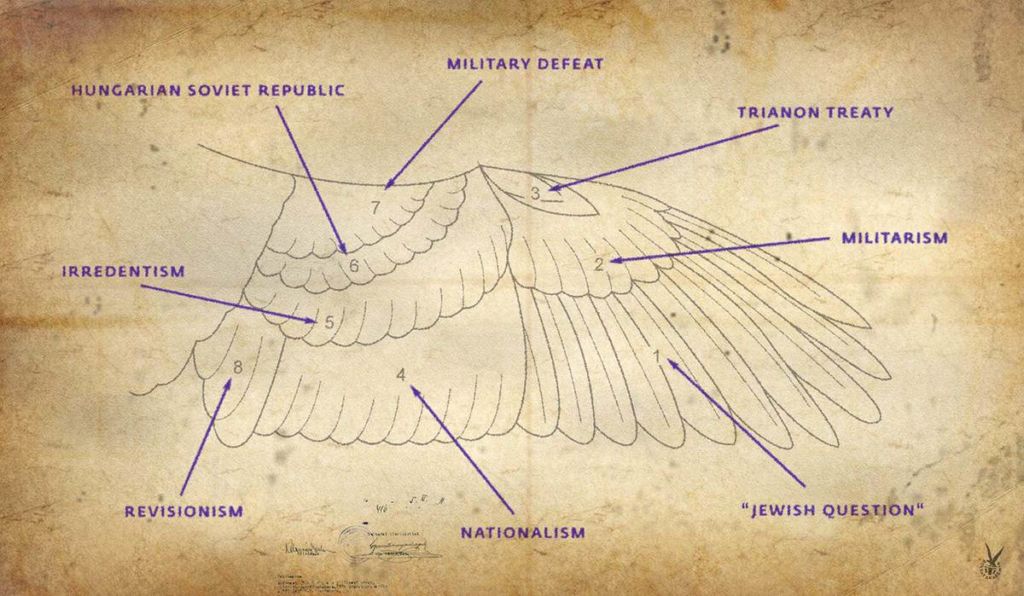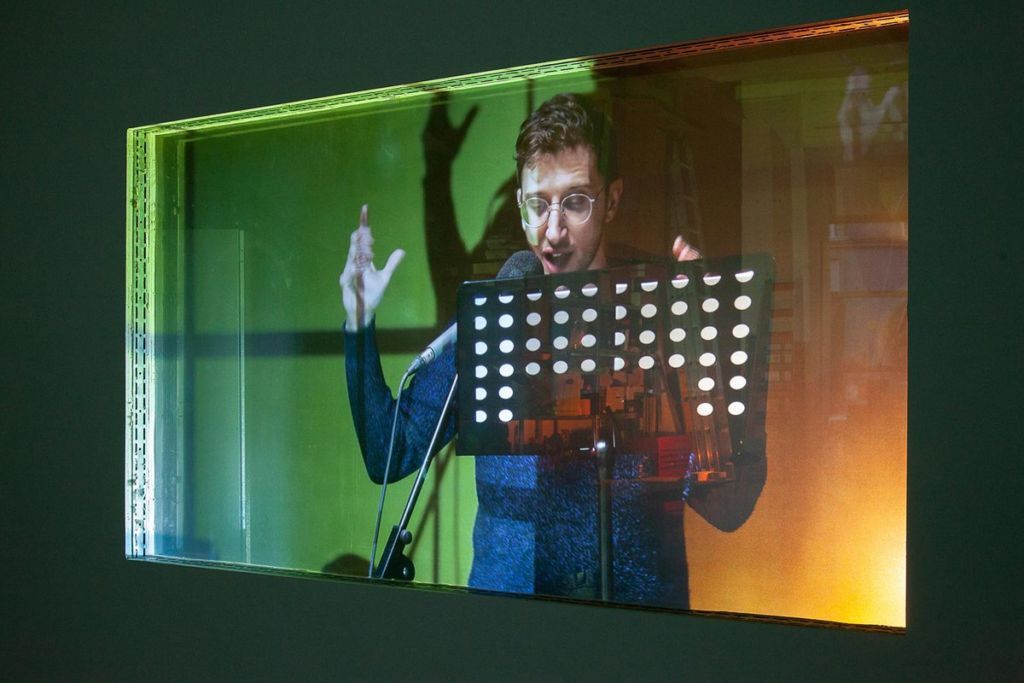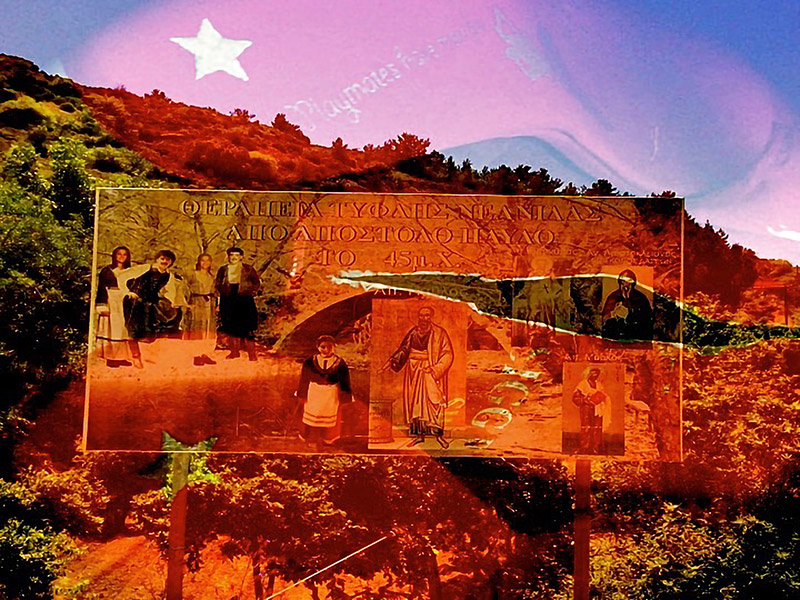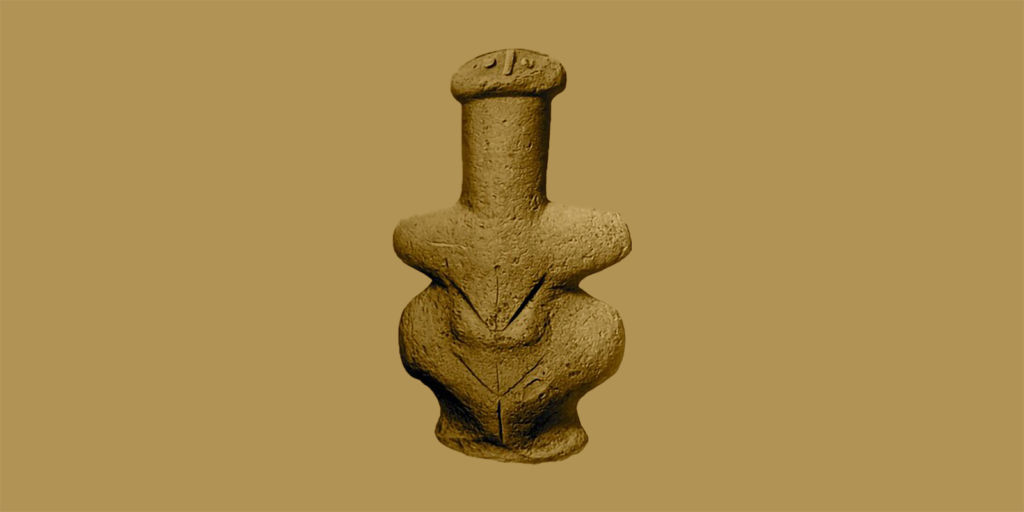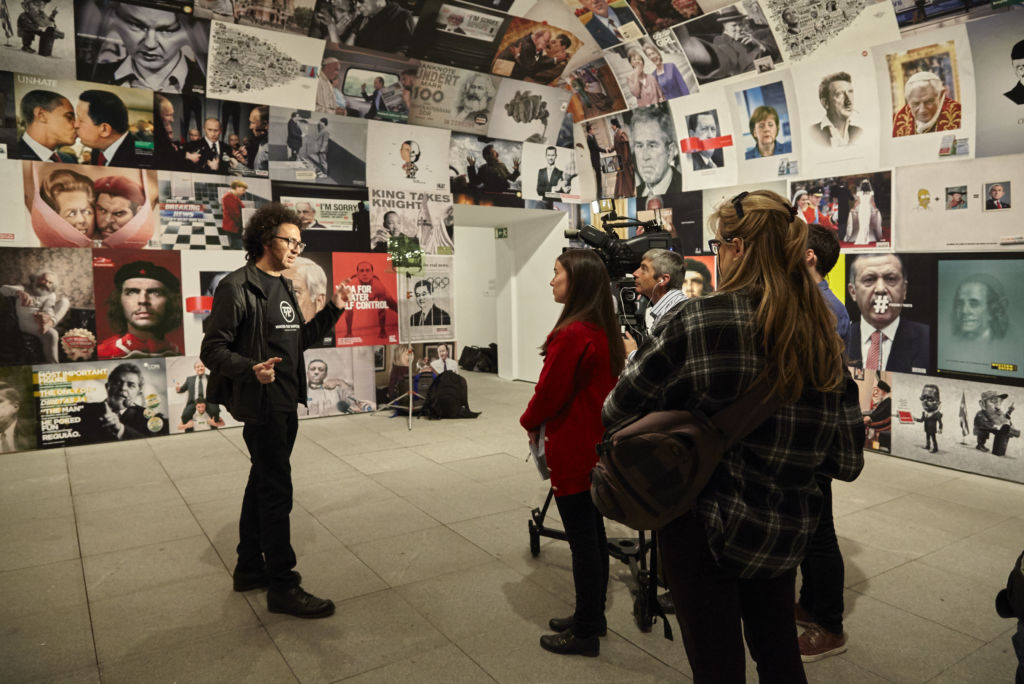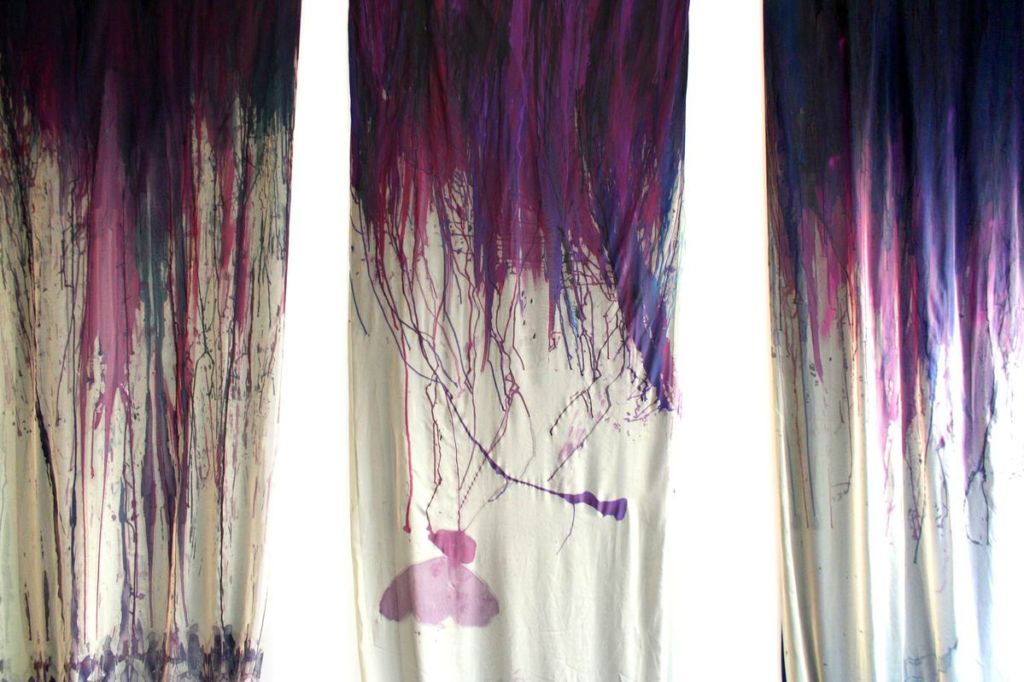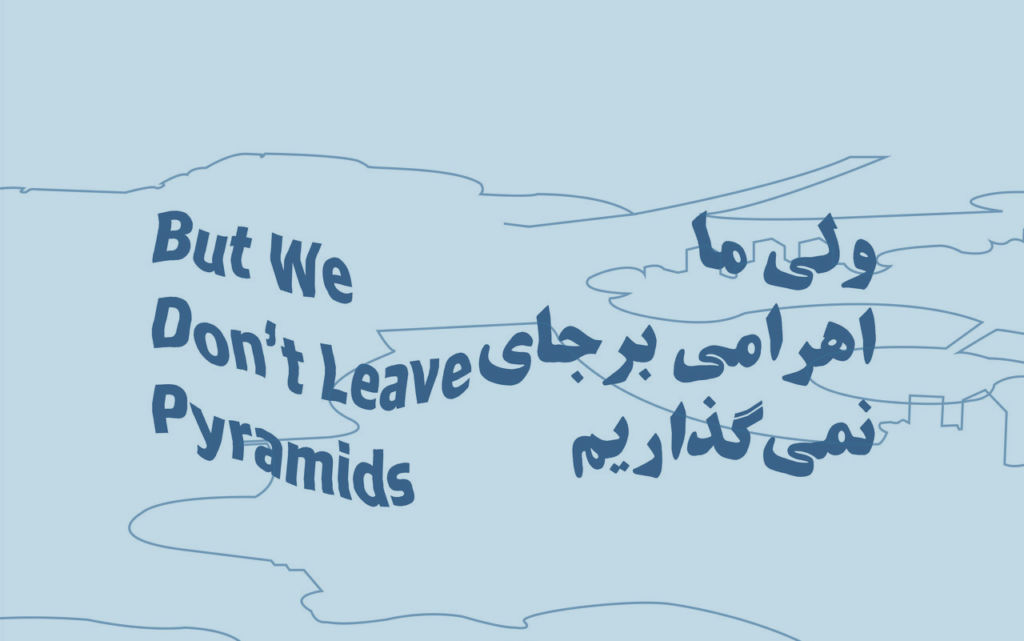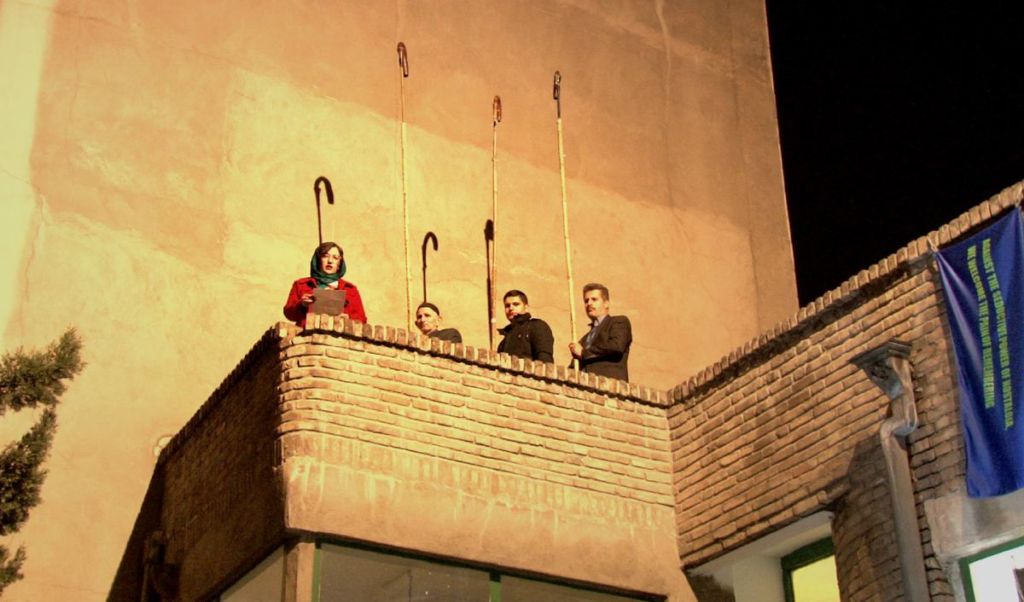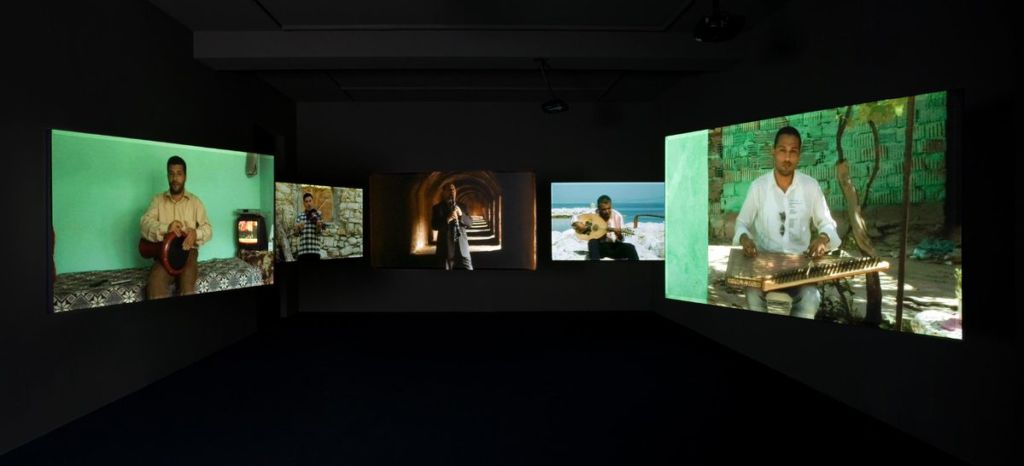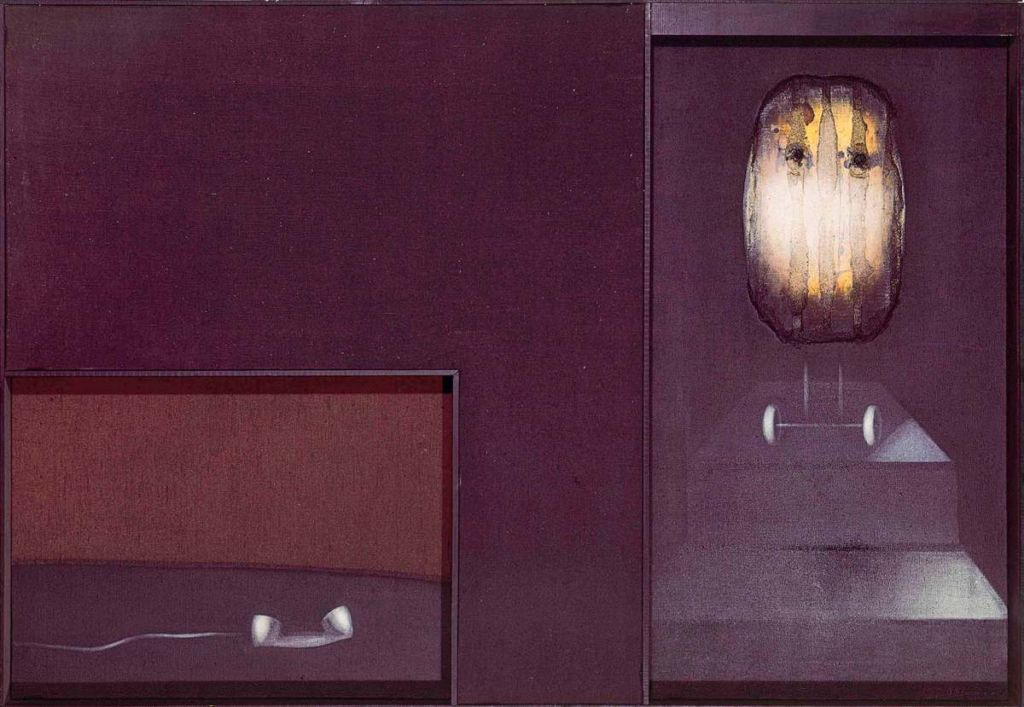We don’t make the party, we are the party: Trapier-Duporté inside Third Place.
Initially this text came from an intuition, altogether banal and shared these days, that art is happening somewhere else. Or at least, somewhere other than the usual places: art centers, art schools and galleries. In any case, it’s the feeling that art is no longer happening, at least not “here”, and the hope of finding it again, perhaps, somewhere else.
P.O.L, 2016.
Gallimard, « Folio essais », p. 29.
As an example of this symptom, take the article in I-D celebrating the “mix” and “unity” of Parisian youth at the Péripate squat to prove that there are no such things as “no-go zones”. Without wishing to cast doubts on the remarkable work by the Péripate and Freegan Pony teams to help refugees, it is noteworthy how the article completely contradicts itself in the homogeneity and “exclusivity” of the examples it cites in the name of diversity: two students studying unidentified subjects, one of whom explains that “the (Péripate) population is very eclectic, people there are totally different. There are whites, gays, blacks, trans” (find what is missing), a stylist assistant, an art school student, a business student, a start-up consultant, and last but not least, a model.https://i-d.vice.com/fr/article/qvkv5q/le-pripate-a-ferme-ses-portes-i-d-lui-rend-hommage
We can gloss over the anxiety and suspicion that has accompanied this concept since its invention in the modern era: art, like criticism, is by nature in crisis. “In an 1810 book about hunting, people bitterly complained about the disappearance of game”, muses Olivier Cadiot in Histoire de la littérature récente. Tome I. “Oh, it’s not like before. Under Louis XV, there were rabbits, my dear, and in abundance1.” It is the end of History, of the universalism of the Enlightenment, of reconciliatory art contributing to the meta-narrative of progress, the triumph of expressivism 2.0: the legitimate but rather old-fashioned demand for unity is in a state of frustration. In its place, a multitude of little narratives: for the past two or three years, places we now call “third places” have developed, be they true physical spaces or curatorial platforms emerging in response to specific opportunities and needs. This is where, we think, we hope, art is still happening with newfound vigor and youth.
To think that art is happening elsewhere than in the works and discourse about it, other than in the art world, is by no means original. Art always seems more to the wayside, or more underground than it is, for a relatively simple reason, invoked by John Dewey in the introduction to his book Art as experience (Gérard Genette would later take up the idea, saying that we maintain an “artistic relationship” to objects): we believe that the work of art is the product—the book, the sculpture, the film, etc. but the “actual work of art is what the product does with and in experience 2 .” What is truly artistic, assumes Dewey, is a particular form of experiencing life, more intense—which is why he includes fishing on the list of aesthetic experiences. Perhaps this is what we expect from third places: an enhanced live experience as a work of art. Through parties, for example, that are organized in them: psychotropic consumption, tattoos, cooking or gardening all become art. Again, the idea is not new. It is Friedrich Nietzsche’s Dionysian dimension of creation, the apparently complete confusion of art and life. Physiological inebriation aside, you could also invoke the Swiss Lebensreform (“life reform”) experience of Monte Verità in the 1910s, which spread to the hippies of California in the 1960s.
It was also after we met the artist duo Trapier-Duporté that we got the idea for this text. They were residents for two years at La Halle Papin in Pantin, a third place “festive and creative toolbox” where we saw them create works for festivals like Karnasouk in Vitry-sur-Seine, March 2017, or the following summer at La Base Filante, an open-air bar and event space in the 11th arrondissement of Paris. They invented the “Wine Cube”, a space with walls drenched in foul-smelling cheap wine. In general, their art tries to have a maximum effect on its receptor through heat, smell, even pain if you decide to get a homemade tattoo from one of them. We wanted to ask them about their experience living inside this mix of partying and creation, and whether or not this experience could by-pass artefacts (the answer is: no). Above all, we wanted to hear about how their work is potentially nourished by Georges Bataille’s ‘infinite expenditure’-meets-Nietzsche’s eternal return. From December 6 to 16, they’ll be part of the exhibition “Pulsar The Open Art Prize” at the Fondation Groupe EDF3.
But before that, some context is required. The term “third place” can have multiple interpretations. Of course, you could call it an updated version of the warehouse/loft or artist-run space. And it’s true, when it takes on a physical form, a third place might look like a gallery to hold performances, lectures, meetings, workshops, but also “exhibitions” in the more classical sense of the word. Such is the case with Lodos in Mexico, which describes itself as “an exhibition space organised by artists, curators, writers, collaborators and friends. The gallery is an initiative that speaks to ideas of collectivity and potential propositions through artistic production.” In Brussels, Damien & The Love Guru calls itself a “curatorial field of experimentation in contemporary art with an anthropological twist. It is currently functioning as an art gallery staging compelling and non-conventional exhibitions by emerging artists. Our mission is to activate immersions in and critical approaches to the cross-disciplinary fields of visual art, performance and sound via independent projects and collaborations. At Damien & The Love Guru we channel the emphasis of an art project as a way to create an inclusive and tangible environment.” In addition to the aesthetic experience, the “artistic project” seems first and foremost social in nature (“inclusive” “critical approach”) and, as we said, equipped to be effective (“tangible environment”).
Wikis, which we will refer to since they are contemporaries of the third place concept, even emanating from a similar collaborative philosophy, can help us elucidate. In the Anglophone world, the third place was a notion forged in 1989 by American sociologist Ray Oldenburg in his essay The Great Good Place: the third place is outside the home (first place) and work (second place), it is a meeting place where you can hang out and exchange with others, a place at the heart of a community. Third place refers only to places for socializing (bars, hair salons, parks, courtyards, etc.), including virtual ones like online video games—without any economic nuance, even if a co-working space could also be an intersection between a second and third place.
On the French Wikipedia, a third place includes the notion of productivity, as described in particular in Manifeste des Tiers-Lieux by Yoann Duriaux and Antoine Burret, co-founders of MoviLab, “the francophone community of Open Source Third Places”, a manifesto that states that “the notion of work is at the heart of the third place” since it is “urgent” to “find solutions that improve the living conditions of citizens to overcome major economic and environmental crises. […] Work, especially creative work, envisions itself in an exploratory dimension.” The method is not one of community but of collectivity that “evolves in a dialectic between collaboration and an individual’s initiative. […] Every person can pursue their desire without impinging upon those of others. Because the Third Place is a shared good: knowledge and goods are its legacy, accessible to anybody.” Third places are therefore also “collective projects enabling co-creation and preserving value within a territory.” Here we have gone from the shared immaterial endeavor of third places (in the English sense) to dedicated work within a productivist and entrepreneurial logic.
This is clearly the philosophy behind a good deal of recently founded spaces. Sites like homologues.xyz have compiled some of them. Alongside third places that operate like artist-run spaces, there are the more explicitly entrepreneurial or event-oriented ones that combine parties, workshops and exhibitions by developing new economic models for creation. Because an artistic third place is not necessarily foreign to the other two places, seen that its touches all aspects of life. The Sorbus collective in Helsinki presents itself as residing “in the midst of 10 euro falafels, yoga studios, bars and striptease places in the Finnish capital. We have sought balance between art, work and life but have started to feel old, uncool and burnt out. This is our dream job – but we’re not sure if we can handle it.” In Paris, third places that make themselves noticed are sometimes by-products of structures like Soukmachines which, since 2004, seeks to “create festive pluridisciplinary and cultural events in unusual venues in order to combine different artistic forms and stimulate discovery.” And so they created the studios La Halle Papin. Amongst the superstructures facilitating artistic third places in Paris, there is Ancoats, “a cooperative of cultural entrepreneurs and fundraising consultants” whose objective is to “imagine a smart city through innovative alliances between the non-profit and private sectors” and who facilitated 6b, DOC, Wonder/Liebert, la Station or the ‘Machines urbaines by Soukmachines’, amongst others. In this sense, these third places are actually united by their search for an economic model: the same names, utopia and interests repeatedly come up. The idea is to share means of production and ideas, to bring visibility to creation, but not, however, to make money out of them (these are not galleries, nothing is for sale), nor to pay artist performance fees or their work. The biggest challenge facing these third places then, when we think about it, resides in real inclusion in an era when, as sociologist Jean Viard puts it, “the sense of togetherness is no longer sustained by any social force,” and is possibly even rejected by all classes 4. Because the only people we actually run into in these third places are the children of an urban bourgeois “creative class”, even when they are often located in remote, suburban areas 5.
This past spring, the duo Trapier-Duporté installed an immersive piece called Aporie – Cristaux Livides at Karnasouk in Vitry. It consisted of a small warehouse that they built over several days, whose inside walls, blackened by smoke, contained etched images reminiscent of cave paintings. The audience moved along as stroboscopes flashed, attempting to make out the etchings, the smell of burnt bay leaves and plastic wafting in the air. But the piece only lasted twenty-four hours. Since some of their earlier projects address the theme of partying, and since some of their more recent pieces like Aporie—Cristaux Livides are shown in a festive context, Trapier and Duporté’s work seems to summarize a certain number of thoughts opened up by this shift of artistic practice to third places: the collective aspect, the maintenance and permanence of an artwork, the role of partying in creation, expenditure and donation at an exhibition, shamanism, etc.
Eric Loret: How did Aporie – Cristaux Livides end up being destroyed?
Théo Duporté: Somebody had the rich idea of kicking into the plasterboard… Once the plaster had a hole in it, others idiots were inspired… And then I guess people just liked it… it was a violent piece, and so it elicited a violent backlash. It was pretty oppressive inside… in a way, we got what we asked for.
Camille Trapier: There’s a link between the life of a piece and the topic it addresses, whether you want it or not. With this piece, we knew it would be hard to bring everything back to the studio because we figured it might break. We were surprised to find a lot more breakage than we anticipated…
EL: Yet we get the impression that your pieces are often a kind of potlatch…
CT: Yes, there’s a clear sense of expenditure. A bit as though our pieces could be consumed… for example, we’re soon going to make something out of candles: we’re going to make molds of our faces, create two busts, and put them on a very heavy cinderblock pedestal. A very clichéd dichotomy of body and spirit, except the candles will be scented with toilet-paper smell. We’re going to smell like deodorizer while we go up in smoke. But Aporie – Cristaux Livides was special… An opposite example would be the mirror we installed at ‘festival Sans prétention’: it faced the sun, reflecting nature and people at the same time. It was a piece that ended up being shown over and over in specific contexts and places.
TD: Because our pieces have some parts that can be saved and others not, there’s always a leftover element. Or at least photographic traces. The soul remains.
EL: We see you a lot at festivals, related to third places or not, that reinforce the festive and ephemeral aspect of your work…
CT: Right now it’s easier to work at festivals because there’s more demand, freedom and also more space, because it’s happening outside. It’s easier to find money, because they are organized by non-profits that can receive grants. But it’s not necessarily our choice. There are plenty of venues in Paris that have it both ways; they are both artist studios and party venues. There has always been decor and scenography at festivals, with video mapping for example, but now it’s becoming hybrid with forms that we’re used to seeing in galleries or art centers.
TD: Every now and then we address the topic of partying in our work and we sometimes end up showing pieces in more festive contexts, but the crux of our work is anchored in the contemporary art context: our forms come directly from art, in an aesthetic characterized by pallets, banners and bolas. And it is not at all the same to show our work in that format… we’re talking to another public, in another context, another framework, but the idea is for these pieces created in festivals to come back to the gallery, and vice-versa.

Trapier-Duporté, Surexposition, (olfactive installation), detail, 2016, galerie Michel Journiac, Paris. Photo : Trapier Duporté
EL: In 2016, you got some plants drunk in order to make them look, you said at the time, like artists after an opening… More recently, you sprayed the walls of a gallery with very foul-smelling cheap wine to make a “Wine Cube”. After a party, there’s the hangover?
CT: The question is always: at what point is the party no longer fun? There’s always a turning point when a party just starts to get creepy. I’m not sure that we work on parties, like people have said, but mainly on expenditure. We don’t call them parties, obviously. A party is a particular way for energy to move, a molecular attitude. It can be inside us or in any place. We don’t say that we’re making a party: we’re partying. Partying is a curiosity created out of things in the moment, in an instant, the only moment when we aren’t thinking about the past or tomorrow. It’s a way of being present to the world, but also of pushing back the anxiety that comes with constantly having to be in the world.
TD: Like [Harald] Szeemann says, attitudes become form… Even if our pieces are accessible through happiness, fun, we have other pieces that use the same elements but speak more about the sadness that comes after a party. We work on partying, on what generates an encounter between bodies. It is everywhere. An attempt at being in the world that we inject into our pieces. It’s rather cynical, there’s an ironic side. The current debacle of the world, is that the game is up…
CT: I’m not sure if it’s cynical, but we are absolutely romantic in our relationship to art and the real: critiquing reality, disenchantment with the world, dissatisfaction with the times, fantasy of what is elsewhere, or what came before…
EL: If partying gives you access, at what moment does it turn sour? There is a tradition of partying as an act of transgression, an opening or a gift, or even as revolt, but what you are analyzing seems rather sterile, in any case, not overtly political… You say that you are from the balek generation (editor’s note: from the French expression on s’en bat les couilles = ‘to not give a fuck’)…
TD: When you stop partying after many hours of excess, you start to come down, you get sad. You think about when you weren’t thinking about anything, and so you want to get back to that state: it’s a cycle, the Dionysian whirlwind. It’s also a way of blinding yourself.
CT: Yeah, partying lets you think about something else, you can escape, but it’s definitely not an opening. I read an article like that, about the generation that eats organic food during the week and then snorts lines of coke on the weekend… An extreme life force followed by an extreme destructive force. That is what the party world constructs… it’s just more parties… Sometimes there are exceptions, for example the after-parties by Péripate, which is very LGBT and “dark”, with Freegan Pony under the highway: a soup kitchen that also provides free meals to migrants.
TD: If not, however, there is of course an ideal of community, they say that a party brings people together, and on the weekend you feel like kissing everybody, but the people you made out with the night before go back to being stockbrokers the next day and you’re not sure you still want to like them.
CT: The problem with revolution is that even if you protest the labor laws, at the end of the day, it’s the same as complaining about strikers: in reality, that’s not where we’re hurting. To have an enemy, no matter how false or small, is what keeps us from being depressed, it keeps us going, otherwise we self-destruct. That’s what Henri Laborit says: there are three possibilities—struggle, suicide or escape, knowing that escape is art and poetry. So we ask ourselves anyway what is still to come in a world that is getting smaller and smaller. The walls are closing in, a lot.
EL: Where do we hurt?
TD: We hurt in the other.
CT: It’s not about feeling pain, it’s more of an existential question, about the absurdity of the world… the fact that the world makes no sense and is just fine that way, because the world is not human. There’s nothing to find. But we, we want to find. Those are Albert Camus’ words: the silence of the world and the desperate call of humans. We have to try to find his Rebel again…
TD: Occasionally we use the accessibility of a party as an entryway to talk about more dense subjects, but these subjects are always suggestions and left to the spectator’s appreciation and judgment…
CT: Faced with this absurdity, we decided to make totems. Totemic pieces.
TD: For example, we bought a condom dispenser from the online classifieds, with key.
EL: One wonders who would sell that kind of thing…
CT: Actually, we wonder who would buy such a thing.
TD: We’re going to paint it, give it a minimalist, metallic shape and fill it with all kinds of meds…
CT: No, no, no…
TD: But they won’t be accessible!
CT: Fine, if you want… the idea is to simply hang it on the wall like a totem. Maybe with other elements, like something immersive. Just the shape, so you recognize the shape.
EL: Condoms, they’re also related to expenditure, to AIDS…
CT: No, it’s more about a generation that wants to go on without having to reproduce.
TD: Our work enables us to talk about the world without having any hope of being able to change anything. Isn’t it a bit egotistical, or vain? We don’t have any illusions about unity either when we talk about partying, we know that we’re not going to hold hands in order to have a strong experience… It’s more “alone in your bubble”. Our job is to put the spectator—not a group of spectators—in their own bubble.
CT: Our pieces aren’t trying to make the audience comfortable. We want to ruffle some feathers, hit you over the head. Because all those other people aren’t listening, by definition, you want to shake them up. We are trying to send out electroshocks.
TD: For example, it’s extremely authoritarian to impose a smell. You walk past a painting, you can look at it or not, but an odor is penetrating, and nauseating. You infiltrate someone using something invisible, you penetrate that person without their consent, and that might disgust them.
CT: We’re going to do a photo series in a seedy nightclub, one with grit, noise, but the photo will appear on Dibond with a neon light underneath to blind the viewer. So we stay with sensations…
TD: … and the role of the spectator. It’s one of our principles: we put the spectator in front or inside something that makes them ill at ease.
EL: So ultimately, it’s about attacking them, you’re very interested in the other…
TD: Actually we have a bad humanistic twist (laughs)…
CT: A difficult caress.
TD: We caress with a fist. Or a kick.
EL: Amongst your artworks are tattoos that you give to one another, or to your friends. This is also about live experience and giving…
CT: Yes, I’m going to be tattooed little by little: covered in drawings from Lascaux. I don’t know if you could call it a work of art. It’s a drawing, an etching. It’s pictorial if you want, it could also be a performance. It’s also just life, you don’t necessarily have to define it. It will depend on the day, the moment, if there’s anything to drink or not. It will probably end with a photo on Instagram. So it’s a bit sad in terms of how it will appear, but in terms of what it means to me, or to us, it’s strong.
TD: There’s the tattoo we gave to everybody (a line down two phalanges of the middle finger). It started during a party, we were drunk, it’s a mark. Five or six friends have it, it’s our crew.
EL: Where does this fascination for cave paintings come from, the negative hands?
CT: There’s something very romantic about our relationship to pre-history. It’s a past time, even for art: the first gestures, unsurpassable. For example, one project we have is to generate a kind of proto-prehistoric alphabet with very simple signs, playing on polysemy. A line might signify person, for example, or something else… we told ourselves “direction”, “inflection”. It will be about collecting meanings.
TD: It’s also related to shamanism, which is part of partying. Everybody thinks it’s something cool but actually, if you see a real shaman, you puke out your guts and then you go on a mad trip. Maybe we’re talking more about shamanism than partying.
CT: There’s that book by the anthropologist Jeremy Narby, who tried Ayahuasca, that was very controversial because he came across as a major stoner… he tried to understand why shamans say they are connected to nature. His theory is that, under Ayahuasca, you understand the universal language that is the language of DNA, and that is why when you trip, you see two snakes wrapped around one another like a DNA helix… why not?
EL: A kind of regression to the cellular unit of life…
CT: That’s it. It allows you to ride back up the Lethe river of creation.
Translation by Maya Dalinsky
Cover: Trapier-Duporté, untitled, (les arrachés), digital photography, 2016. Photo: Trapier-Duporté


